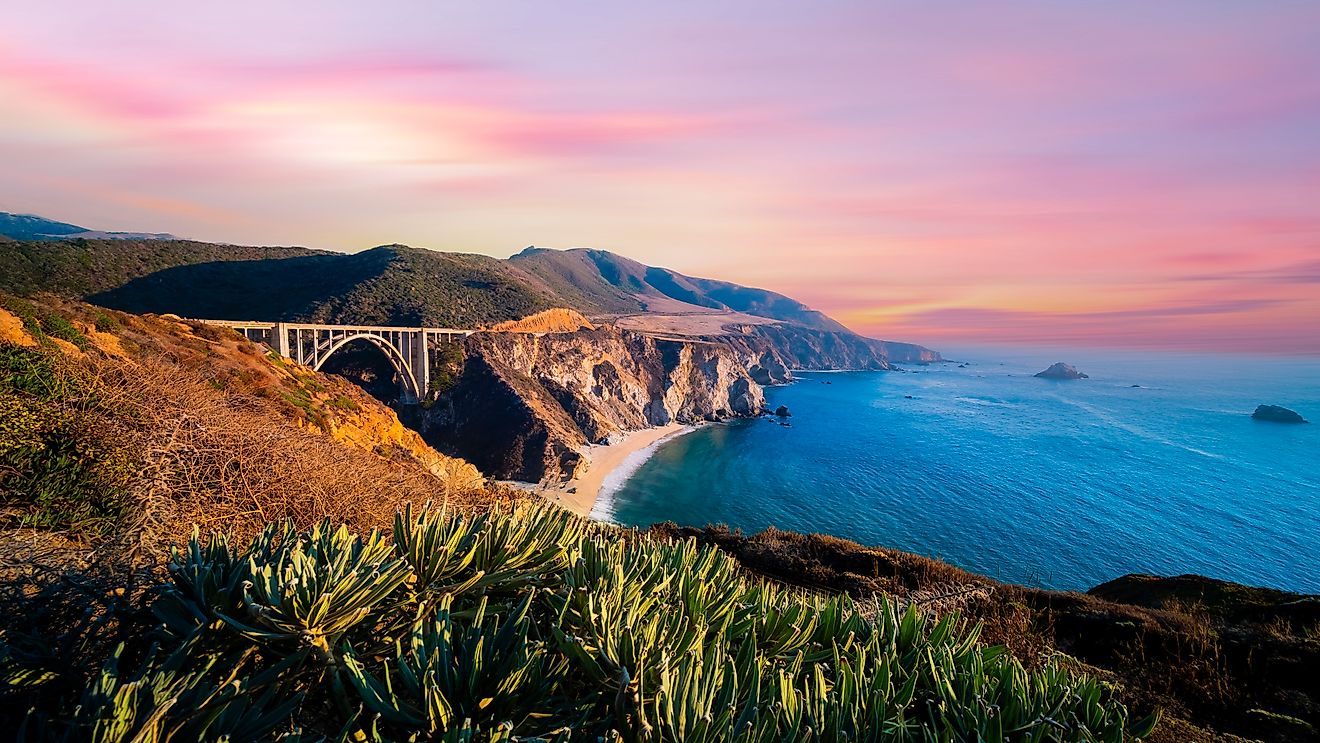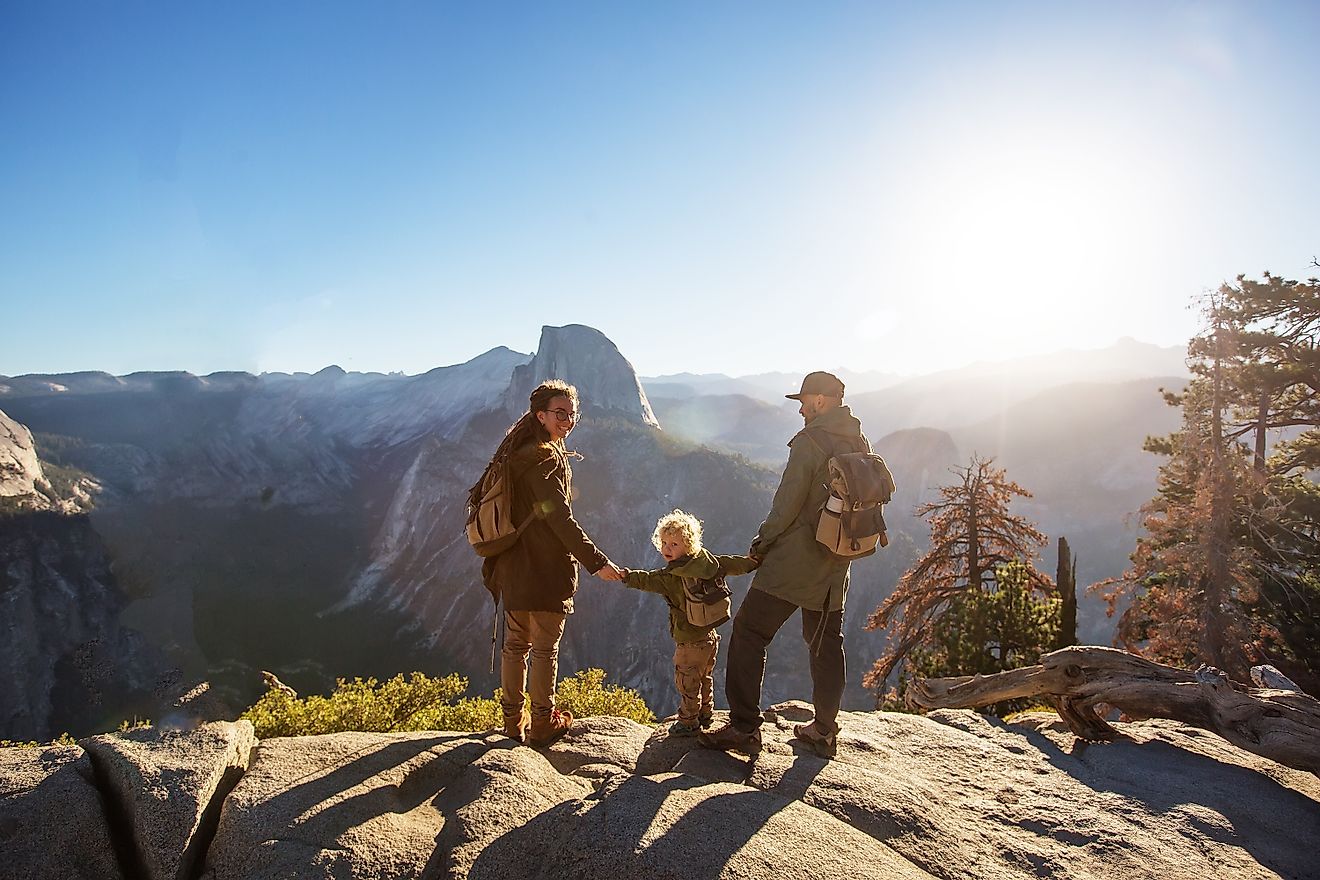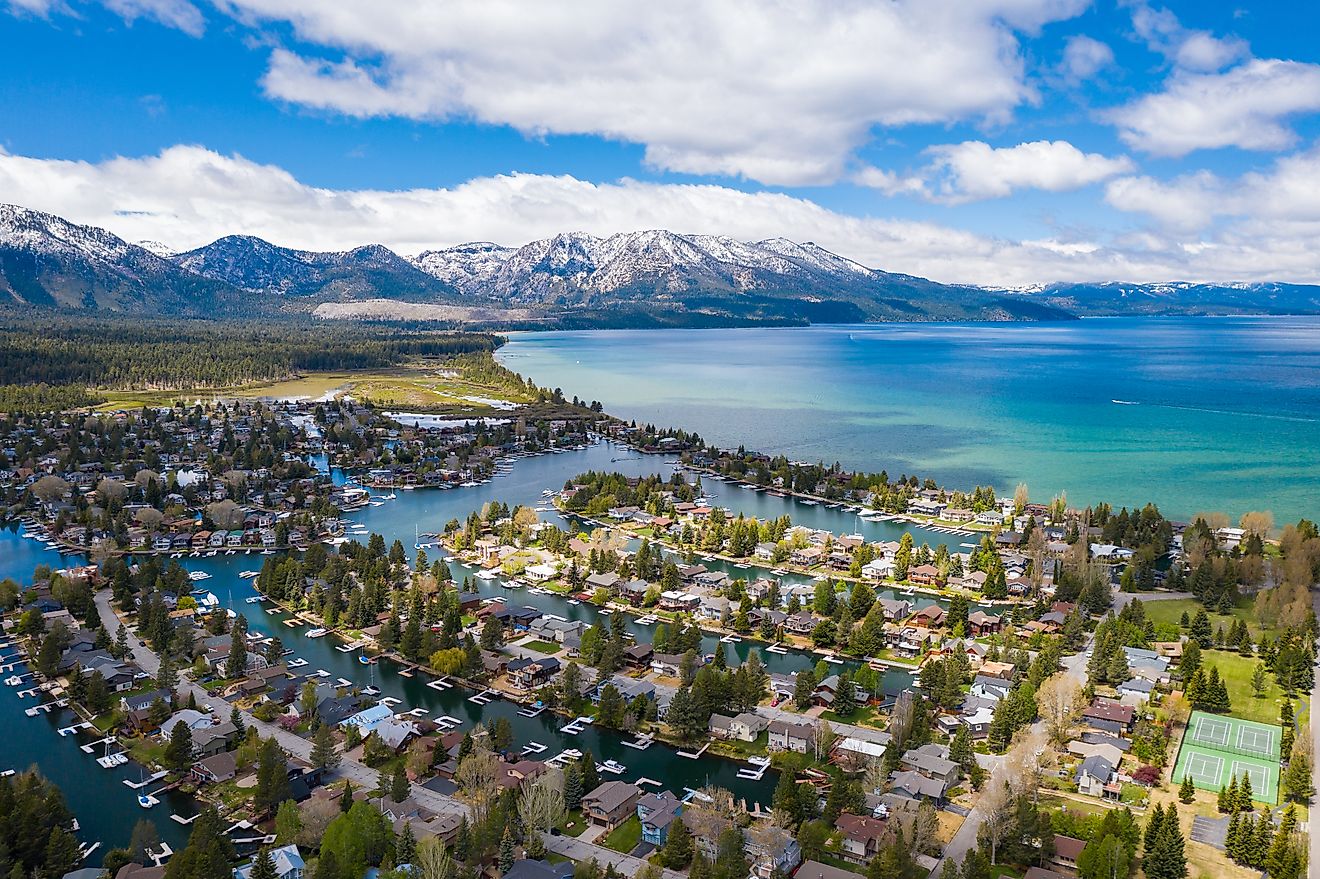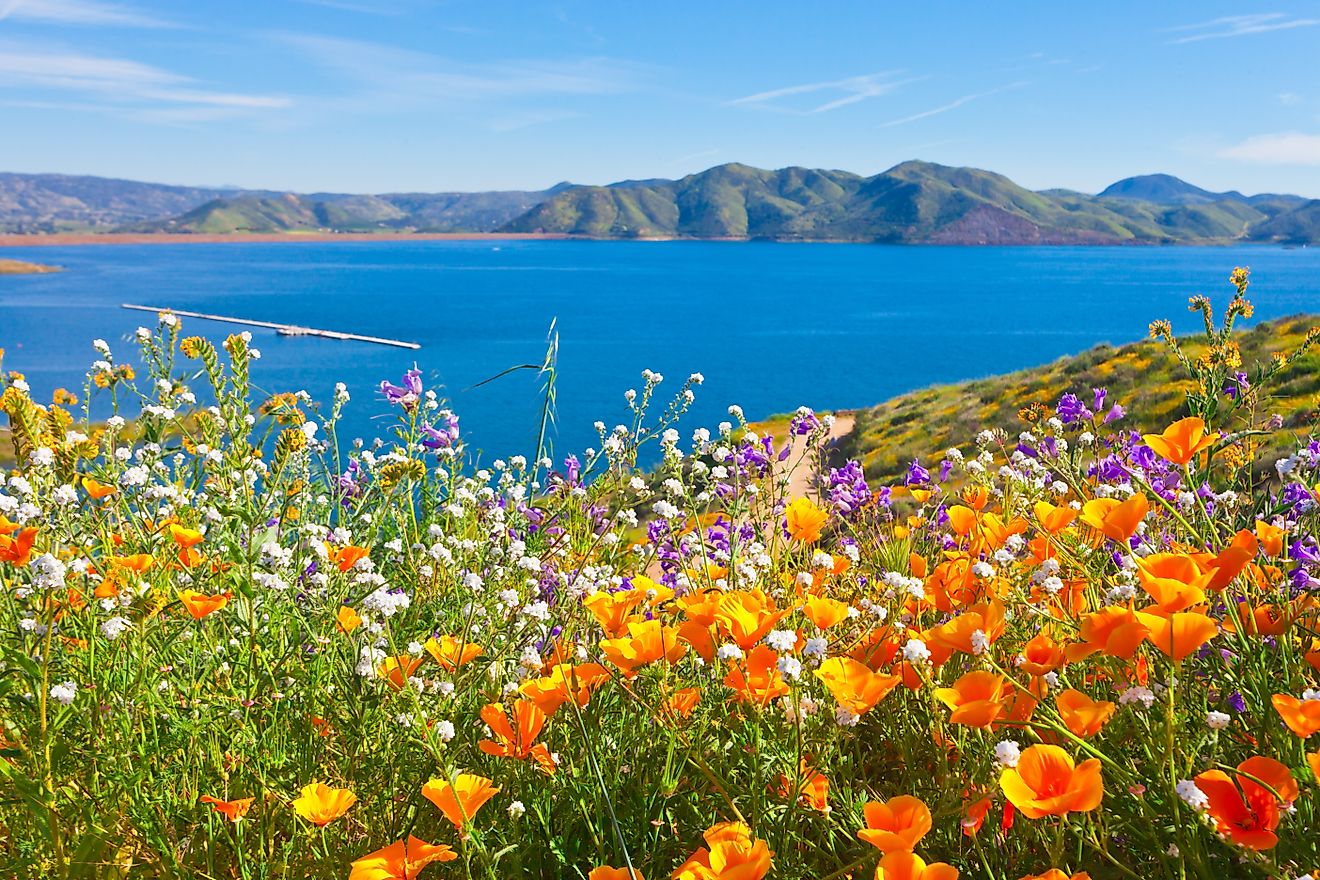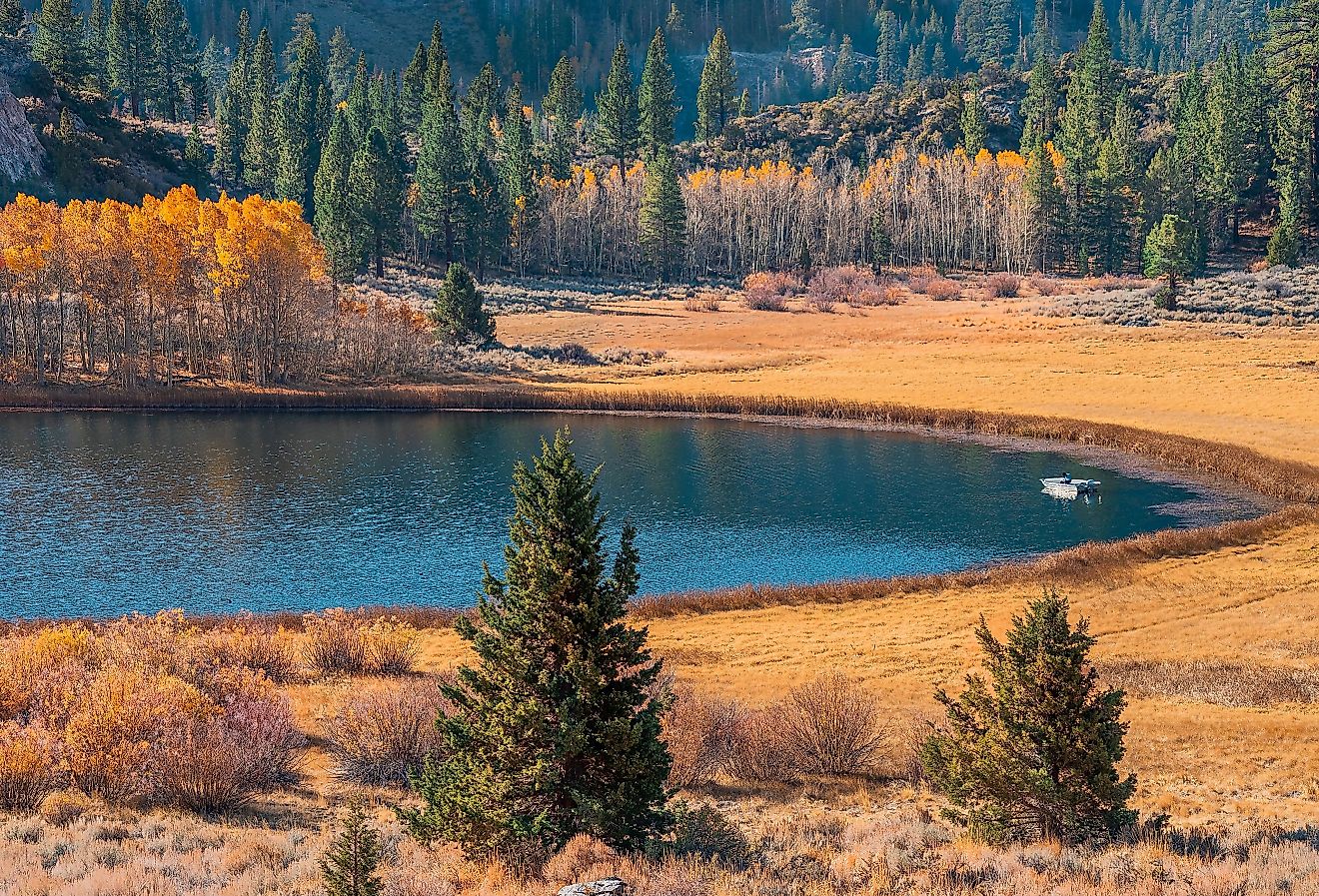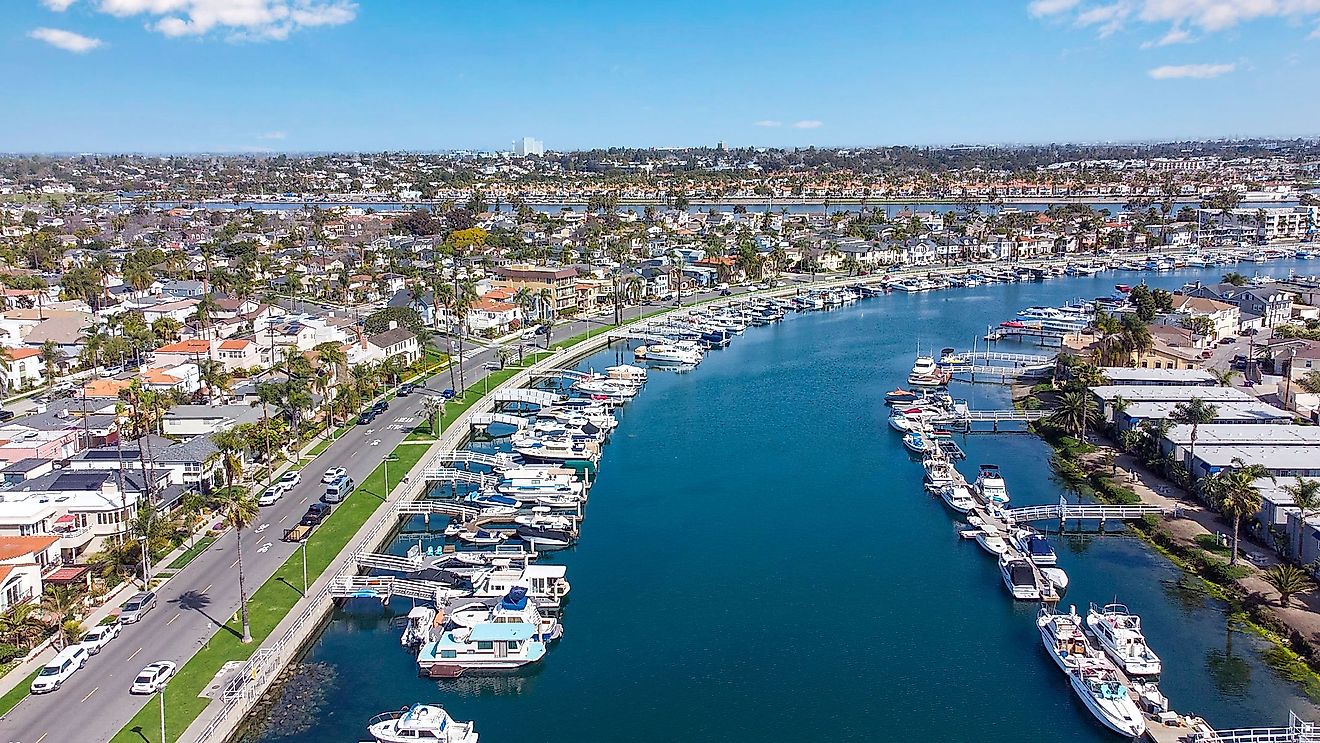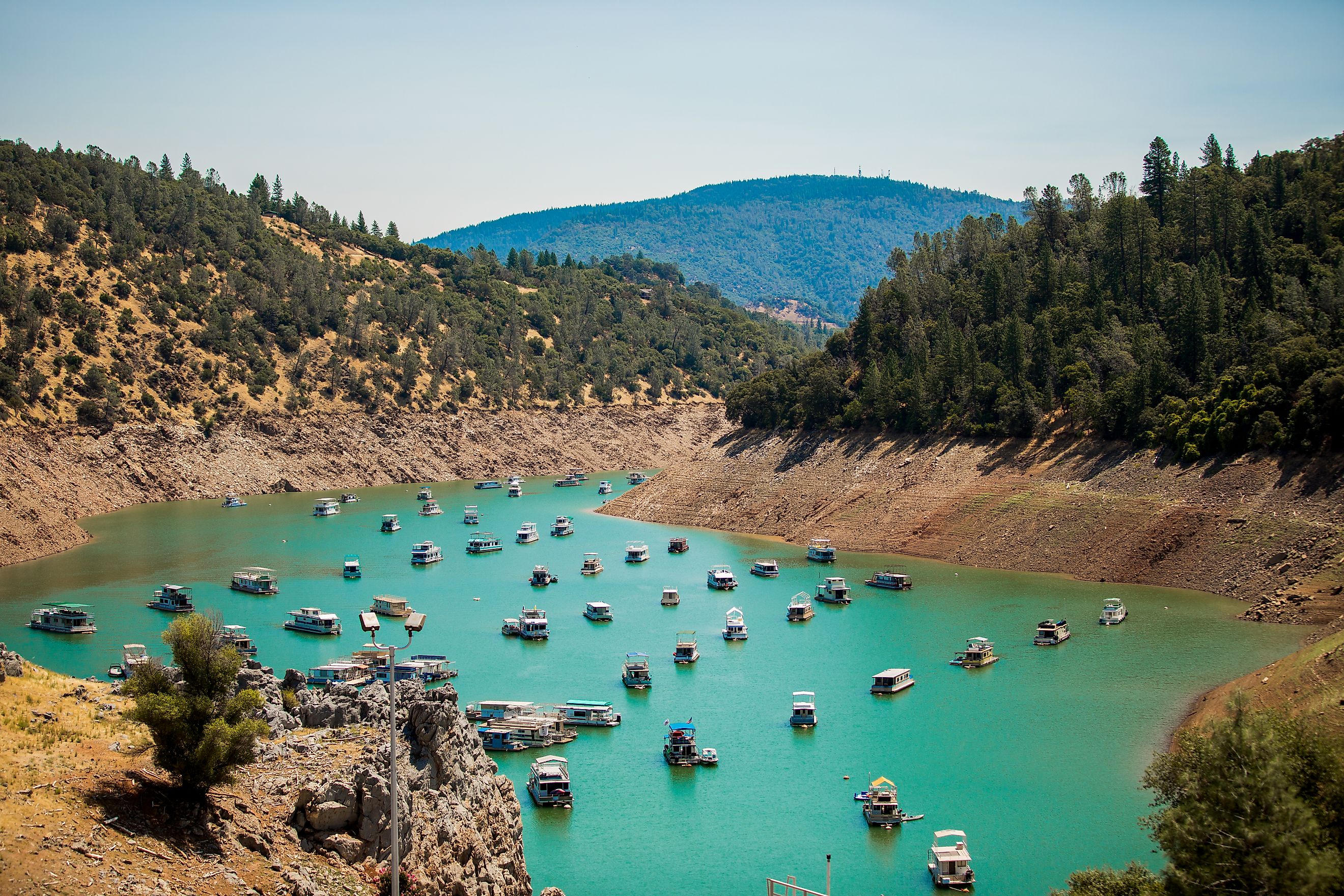
Lake Oroville, California
Lake Oroville is more than a reservoir. It’s a commanding presence in California’s Sierra Nevada foothills and a cornerstone of the state’s water infrastructure. Located just five miles northeast of the city of Oroville in Butte County, the lake spans more than 26,000 acres and anchors a landscape shaped by Native American heritage, Gold Rush history, and one of the most ambitious water projects in US history.
Surrounded by rolling hills and pine-dotted ridgelines, Lake Oroville is essential for water storage, hydropower, and flood control. It’s also a hotspot for outdoor recreation and a habitat for some of the state’s most iconic fish species.
A Dam That Changed the State
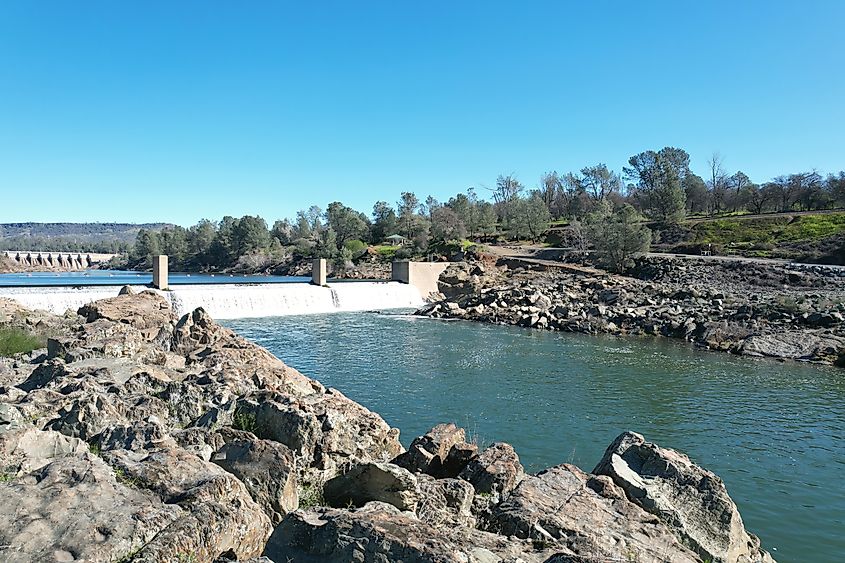
Lake Oroville was created by the Oroville Dam, completed in 1968. At 770 feet tall and nearly 7,000 feet wide, it remains the tallest dam in the United States. This massive earthen barrier blocks the Feather River and collects runoff from the Sierra Nevada mountains. With a storage capacity of over 3.5 million acre-feet, it is the second-largest reservoir in California.
The dam is part of the California State Water Project, a system that delivers water to more than 25 million people and hundreds of thousands of acres of farmland. Power generated at the Edward Hyatt Powerplant (an underground hydroelectric facility) supplies up to 819 megawatts of electricity.
From Gold Dust to Blue Waters
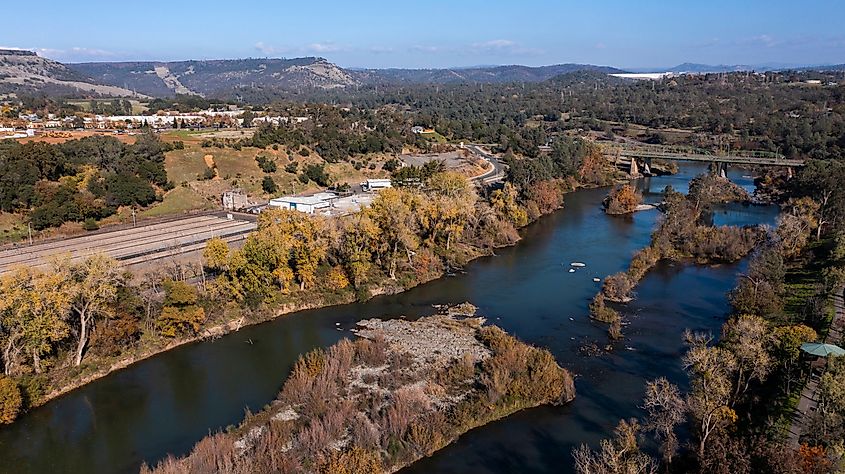
Long before construction began, the region was inhabited by the Konkow Maidu, whose communities thrived along the Feather River. The landscape changed forever in 1848 when gold was discovered in the riverbeds. Just months later, John Bidwell struck gold at what would become Bidwell Bar, drawing thousands of miners to Butte County.
The Gold Rush led to displacement of Native communities and altered the natural landscape. Archaeologists have identified hundreds of sites near Lake Oroville linked to both Native life and Gold Rush settlements. These include ceremonial grounds, rock shelters, mining camps, and burial sites.
The Oroville–Thermalito Power and Water Network
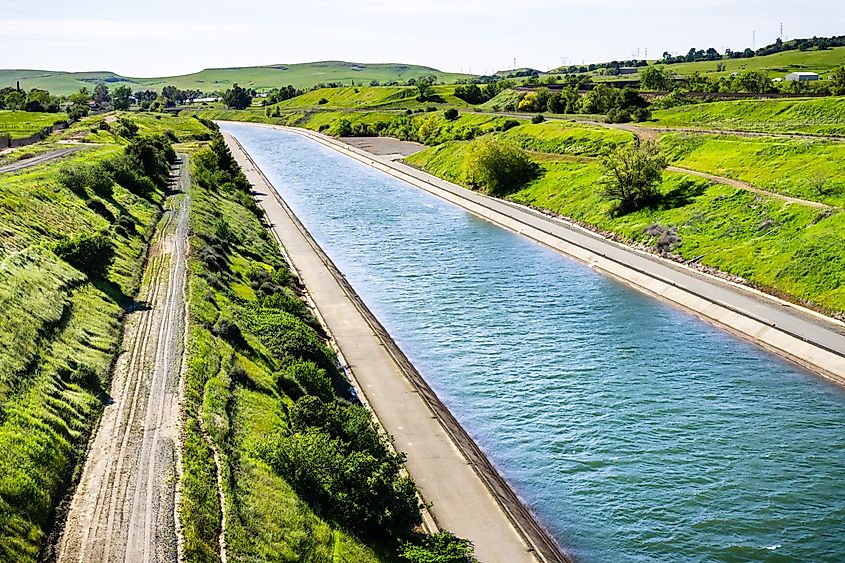
Lake Oroville is part of a broader system of interconnected infrastructure known as the Oroville–Thermalito Complex. Together, these facilities manage water movement, generate electricity, and support fish populations in the Feather River Basin.
Oroville–Thermalito Complex Includes:
-
Edward Hyatt Powerplant
-
Thermalito Diversion Dam and Powerplant
-
Thermalito Forebay and Afterbay
-
Lake Oroville Visitors Center
-
Feather River Fish Hatchery
The lake's watershed spans over 3,600 square miles, and its main inflows are the North, Middle, South Forks and the West Branch of the Feather River.
Managing Floods and Dry Spells
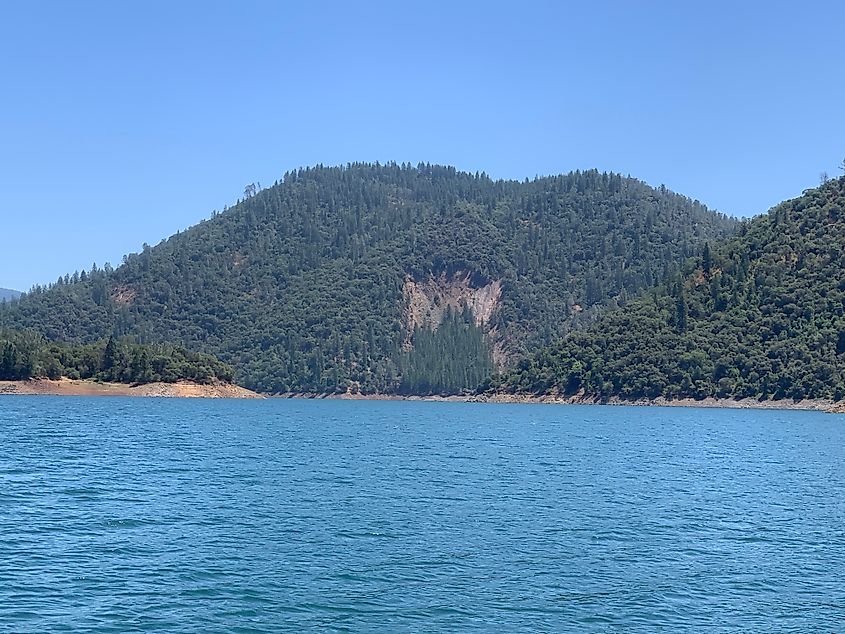
Lake Oroville plays a critical role in California’s flood control strategy. In spring and early summer, melting snow from the Sierra Nevada floods into the lake. Between April and July, this runoff makes up 40 percent of the lake’s annual inflow.
To prepare for heavy rain, the U.S. Army Corps of Engineers mandates reduced water levels by mid-October. Release rates are calculated daily, depending on soil saturation, snowpack, and weather forecasts. Downstream flow is carefully managed to balance flood prevention, water supply, and ecological health.
When Infrastructure Is Tested
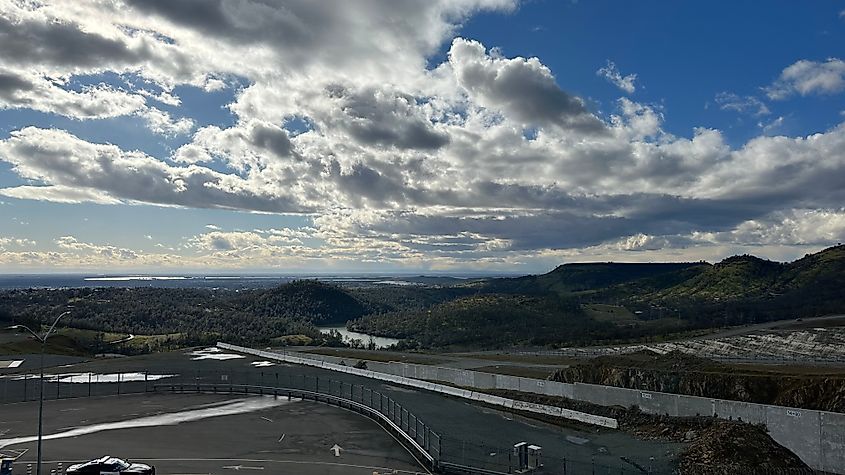
In 2017, heavy rains and massive spillway flows severely damaged the main spillway. The emergency spillway was used for the first time in history, but quickly showed signs of erosion, prompting the evacuation of nearly 200,000 people downstream.
Rapid repairs followed. The main spillway was rebuilt by November 2018, highlighting the aging infrastructure’s vulnerability in the face of climate change and extreme weather.
Fishing in a Premier Bass Destination
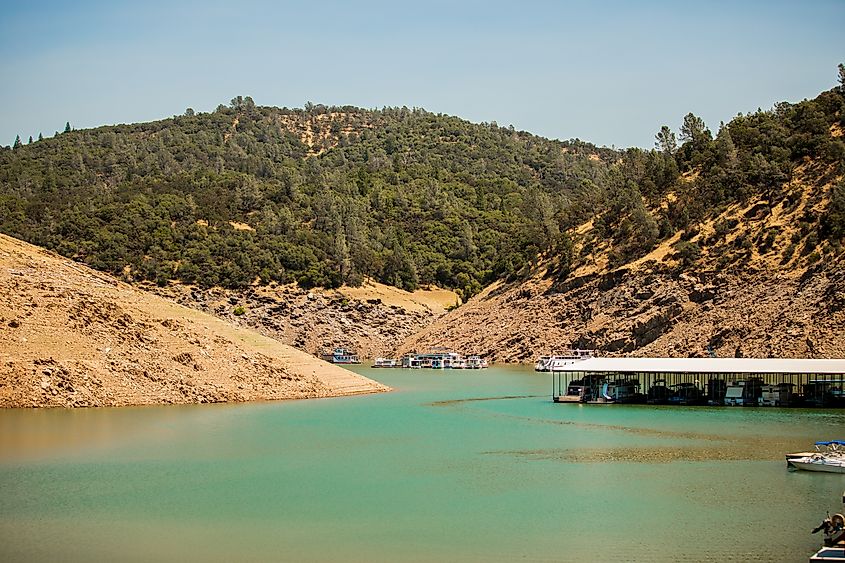
Lake Oroville is nationally recognized for its sportfishing. Anglers come from across the country to fish its deep waters and quiet coves.
Popular Species in Lake Oroville:
-
Largemouth, smallmouth, and spotted bass
-
Chinook salmon
-
Brown and rainbow trout
-
White crappie
-
Catfish and sturgeon
The Feather River Fish Hatchery, located downstream from the dam, was built to mitigate the loss of salmon and steelhead spawning habitat. Today, the hatchery raises millions of juvenile fish each year and is open to the public.
Visitors can watch salmon spawn in viewing windows during the fall and enjoy the annual Oroville Salmon Festival in September.
A Recreation Haven
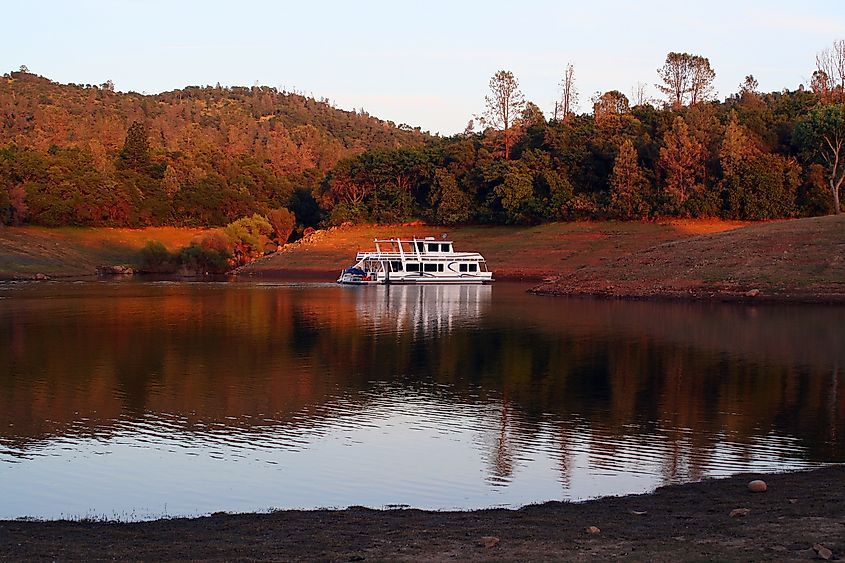
The Lake Oroville State Recreation Area offers some of the best water-based and wilderness activities in Northern California.
Top Outdoor Activities:
-
Boating: Waterskiing, wakeboarding, kayaking, and sailing are all popular. Houseboats can be rented at Bidwell Marina or Lake Oroville Marina.
-
Camping: Choose from traditional campgrounds, floating campsites, and boat-in spots. Equestrian sites are also available.
-
Hiking and Wildlife Viewing: The surrounding forests are home to deer, bobcats, turkeys, and eagles. Birdwatchers enjoy a variety of migratory species.
-
Visitor Center: Exhibits and a viewing tower offer a 360-degree look at the lake, the Sierra foothills, and the Sutter Buttes.
The Climate Factor
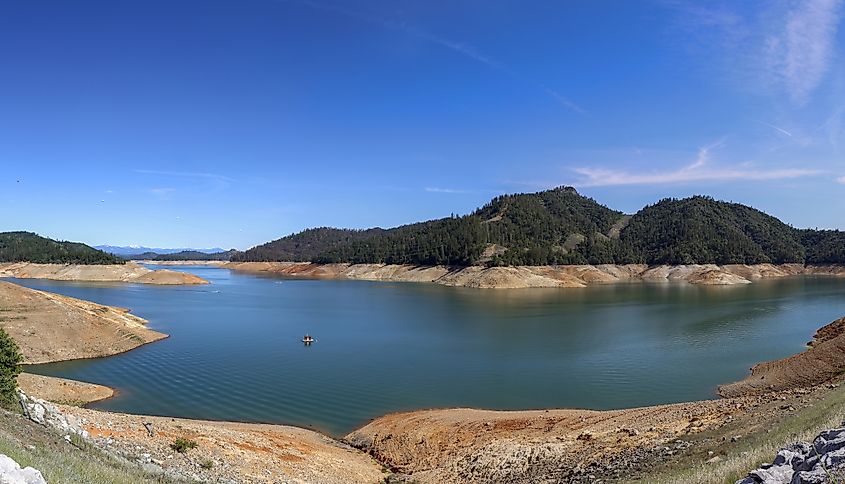
Lake Oroville has a Mediterranean climate. Summers are hot and dry, while winters bring cooler temperatures and rainfall. The lake receives about 30 inches of precipitation annually, mostly between November and March.
Climate Snapshot:
-
Average summer high: 93°F
-
Average winter high: 56°F
-
Average annual rainfall: 30 inches
In 2021, the lake fell to just 35 percent of its capacity, forcing the shutdown of the Hyatt Powerplant. It was the first time the dam could not generate electricity due to drought. Normal operations resumed in January 2022 following heavy rains.
Feather River Fish Hatchery: A Conservation Keystone
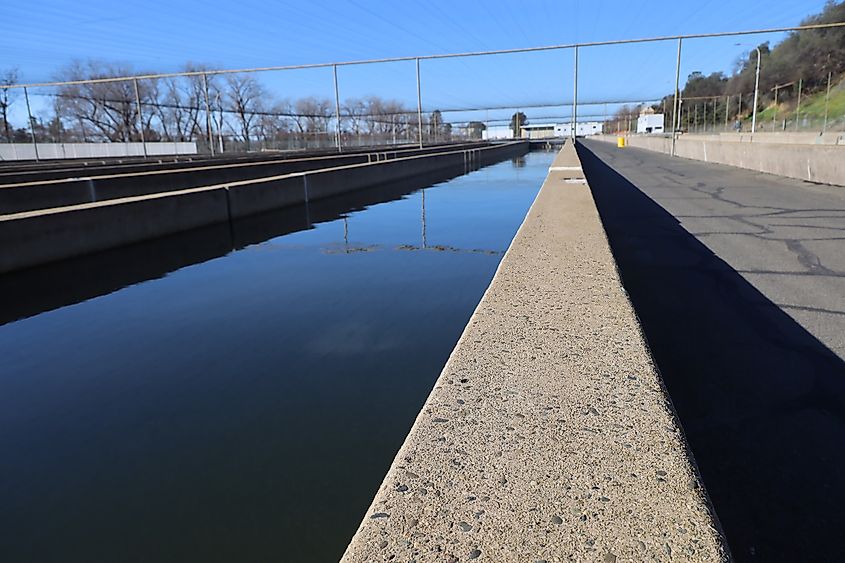
The hatchery plays a vital role in sustaining salmon and steelhead populations. After the construction of the Oroville Dam blocked upstream spawning routes, the Department of Water Resources and the Department of Fish and Wildlife built the hatchery to preserve migratory fish runs.
The facility features a fish ladder, barrier dam, spawning room, and rearing ponds. Each fall, visitors can watch as salmon are harvested for eggs, a unique and educational experience.
The hatchery raises:
-
Spring-run and fall-run Chinook salmon
-
Steelhead trout
The hatchery's success supports commercial and recreational fisheries and is critical to the health of the Sacramento River system.
A Reservoir That Reflects California’s Challenges and Hopes
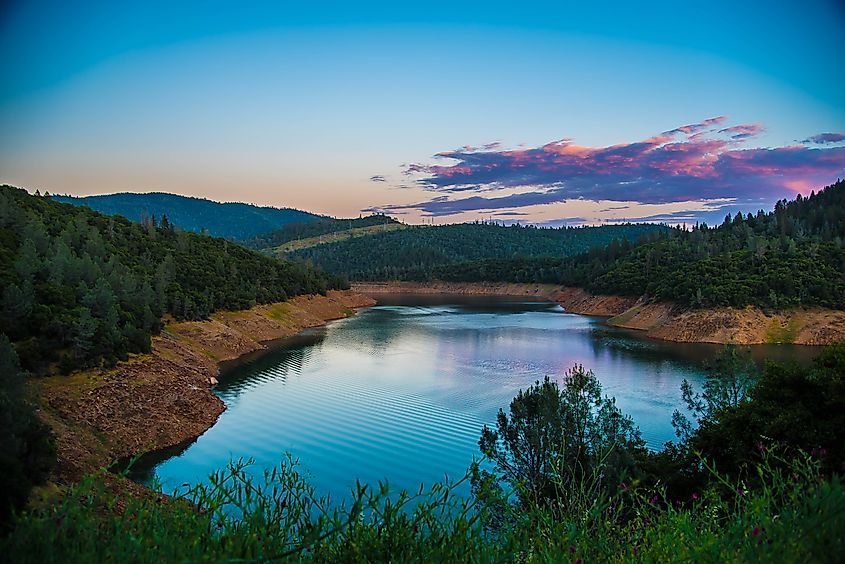
Lake Oroville is a powerful symbol of California’s ability to engineer solutions for water scarcity, energy production, and ecological restoration. It is also a place of incredible natural beauty and rich cultural history. From its Native American roots to its role in modern water management, Lake Oroville continues to shape—and be shaped by—the people and environment of Northern California.
Fast Facts About Lake Oroville
| Feature | Detail |
|---|---|
| Location | Butte County, California |
| Surface Area | Over 26,000 acres |
| Dam Height | 770 feet (tallest in US) |
| Storage Capacity | 3.5 million acre-feet |
| Main Inflows | North, Middle, South Forks, West Branch of Feather River |
| Hydropower Output | 819 megawatts |
| Climate | Mediterranean – hot, dry summers, cool, wet winters |
| Recreation | Fishing, boating, hiking, camping, wildlife viewing |
| Key Wildlife | Chinook salmon, steelhead trout, bass, deer, eagles |
